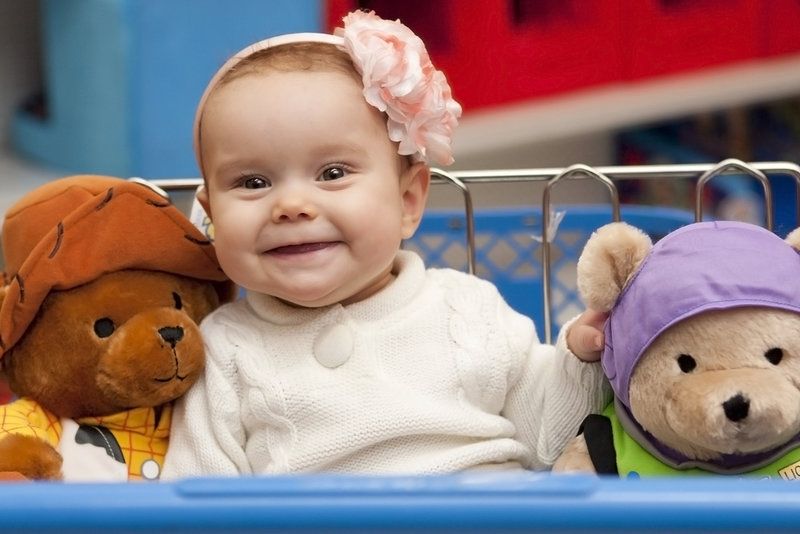
Despite never having performed surgery or dissected an animal, 8-month-old babies expect living creatures to have insides, new research suggests.
The study, detailed Sept. 3 in the journal Proceedings of the National Academy of Sciences, revealed that tots expected self-propelled objects to have guts and were surprised when those objects were hollow.
The results suggest babies have an innate ability to understand the basic biology of animals.
"Young children expect animals to have different insides from inanimate objects, and they realize that an animal's insides are important for its survival," study co-author Peipei Setoh, a psychology doctoral candidate at the University of Illinois at Urbana-Champaign, said in a statement. "They know that if you remove the insides, the animal can't function." [11 Surprising Facts About a Baby's Brain]
Built-in awareness
Babies may look like blank slates, but a lot is going on behind those chubby cheeks and wide eyes. Some studies suggest babies have moral compasses, and other research has found that infants have an intuitive grasp of physics and even statistics.
For instance, when they see objects moving by themselves, babies assume those objects must have internal energy. And when they see objects that seem to respond to environmental changes, they think those objects must have mental awareness.
Sign up for the Live Science daily newsletter now
Get the world’s most fascinating discoveries delivered straight to your inbox.
But whether they had a similar sense about biology wasn't clear.
Animals have guts
So Setoh and her colleagues showed a variety of toys to babies as young as 8 months. Some of the objects were both self-propelled and able to respond to their environment (a sign that they had mental states). Other objects had just one of those traits, and still other toys were completely immobile.
Then, the team opened up the objects, revealing hollow insides.
The babies looked longer at the toys that moved on their own and responded to environmental cues. That suggested the youngsters viewed these objects like animals with guts and were surprised by their empty insides.
In a second experiment, the team showed furry objects to tots, before revealing the furballs were hollow. Because even young babies know that animals have fur, the tots once again looked longer at their hollow insides than at the non-furry objects that were hollow, suggesting their expectations were confounded.
The findings suggest infants have awareness of how animals operate.
"When babies encounter a novel object that is both self-propelled and agentive, they categorize it as an animal, and they assume it has insides,” study co-author Renée Baillargeon, a psychology professor at the University of Illinois Urbana-Champaign, said in a statement.
It's not clear why babies come wired with a built-in biological intuition, but one possibility is that it helped them identify prey or flee from dangerous predators in our evolutionary past, the researchers note.
Follow Tia Ghose on Twitterand Google+. Follow LiveScience @livescience, Facebook & Google+. Original article on LiveScience.

Tia is the managing editor and was previously a senior writer for Live Science. Her work has appeared in Scientific American, Wired.com and other outlets. She holds a master's degree in bioengineering from the University of Washington, a graduate certificate in science writing from UC Santa Cruz and a bachelor's degree in mechanical engineering from the University of Texas at Austin. Tia was part of a team at the Milwaukee Journal Sentinel that published the Empty Cradles series on preterm births, which won multiple awards, including the 2012 Casey Medal for Meritorious Journalism.












